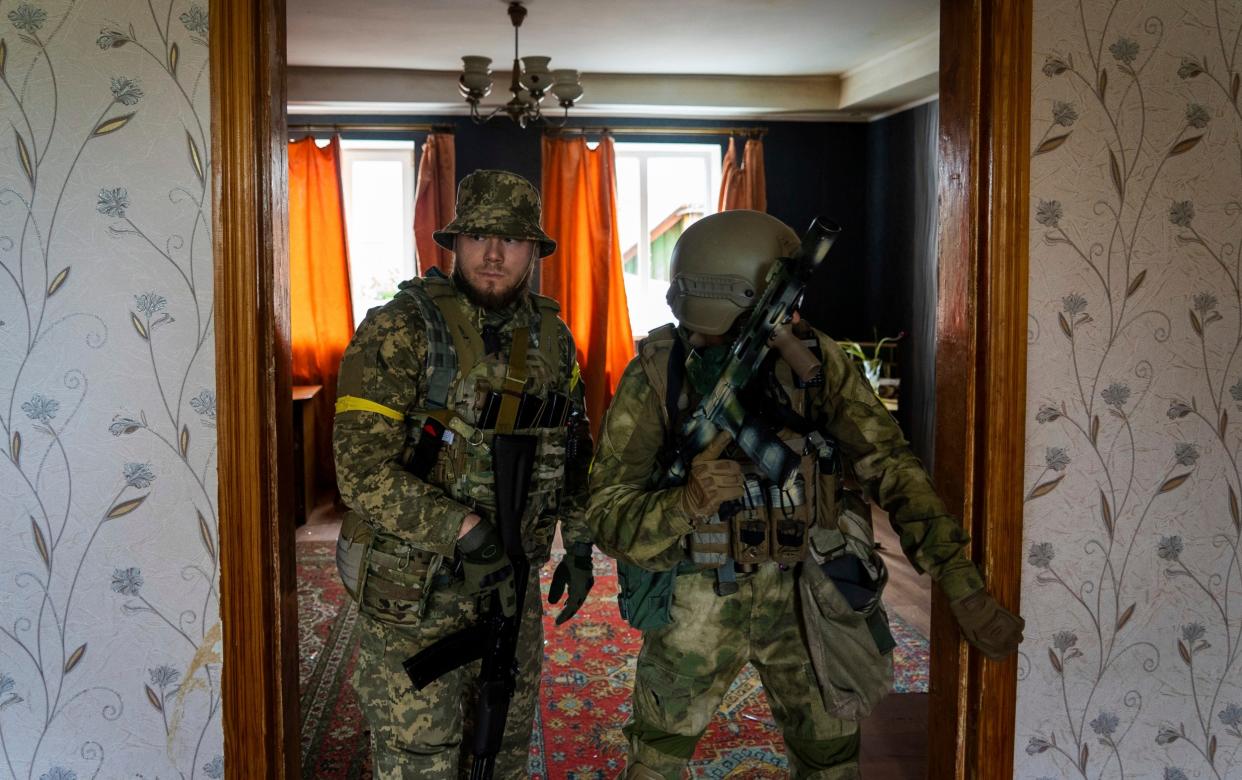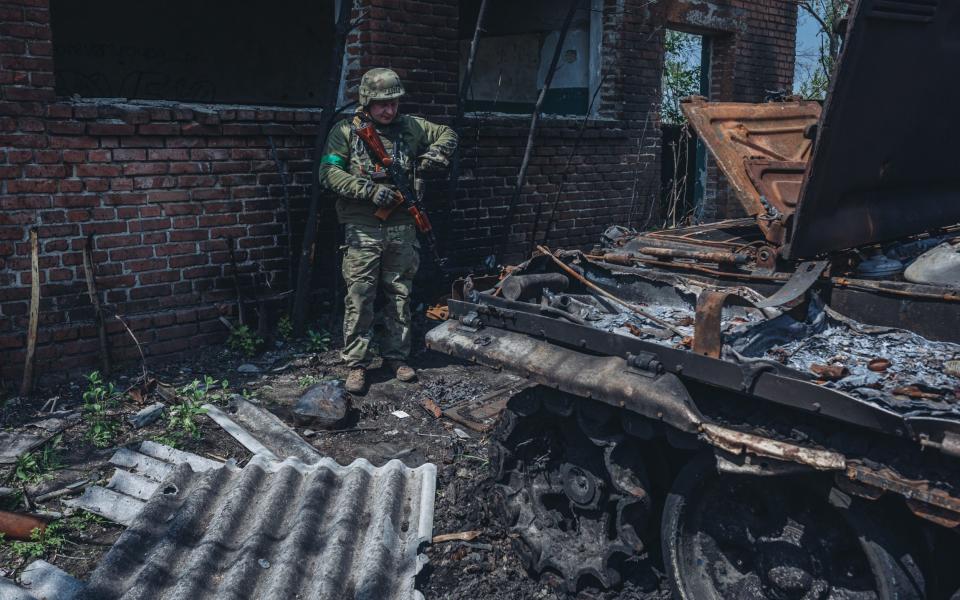Kharkiv is beginning to look like Ukraine’s second major victory over Russia

- Oops!Something went wrong.Please try again later.
On May 9, Vera Yevlakhova woke up to an unusually quiet day in the heavily shelled Kharkiv region village of Tsyrkuny.
There was a rumble of engines outside her window as dozens of Russian tanks, armoured vehicles and troops moved east along the village’s single main street.
“We didn’t know what was going on – I thought maybe the war was over. Then, later in the afternoon, the Ukrainians arrived and we realised they were running away,” she told The Telegraph as shelling rumbled in the distance.
It was May 9, the day on which Russians mark victory in the Second World War. That morning, Vladimir Putin gave an uncharacteristically subdued speech, confusing some observers by avoiding any premature claims of victory in Ukraine.
Mrs Yevlakhova, 80, had just witnessed the Russian army withdrawing from its last foothold along the Kharkiv ring-road – marking the end of the Kremlin’s two-month effort to capture Ukraine’s second city.
Distant but heavy shelling was audible from Kharkiv city centre on Sunday morning. Air raid sirens sounded several times throughout the day.
Nonetheless, Kharkiv is beginning to look like Ukraine’s second major victory in the war after the defence of Kyiv. It could have dramatic implications for the further progress of the conflict.
On Saturday, the Institute for the Study of War, an American think tank, described the battle of Kharkiv as effectively over (the graphic below shows the changing situation from March 1 to May 13).
On the first day of the war, when a vast Russian army, including the elite First Guards Tank army, rolled across the border, Russia’s troops outnumbered and outgunned the Ukrainians.
There were good reasons for confidence at the start. However, as soon as tank units broke on to the Kharkiv ring road they were destroyed by small Ukrainian units armed with Anglo-Swedish anti-tank missiles.
To the north west, the attack didn’t get past the satellite town of Dergachi, where dozens of vulnerable supply lorries carrying ammunition were pulverised on snow-covered country roads. The assault descended into chaos.
Two days later, Russian commanders tried to regain the element of surprise by sending dozens of lightly armoured vehicles storming towards the city centre from several directions at once. When that, too, ended in disaster, it was clear the Russians had missed their chance to take the city quickly.
In recent weeks, with Russia depleted by defeat outside Kyiv and concentrating its remaining forces for a grand attack in Donbas, the Kharkiv front has been ripe for a counter-offensive.

In hindsight, there is a temptation to see victories as inevitable, but Kharkiv was a close-run thing.
In the first days of the war, when Russian vehicles penetrated almost to the city centre, fear and confusion reigned. For several hours no one knew who was in control.
Throughout the following weeks of artillery battles, fears of imminent encirclement remained.
The atmosphere in the city now is one of relief, but not complacency.
Throughout this war, Moscow’s troops have shown a marked reluctance to enter urban areas.
Military planners say the usual required ratio of attacker to defender in normal combat, 3:1, can be at least doubled when entering the warren-like streets and narrow kill-zones of a city. Russia has simply never had the troop numbers for this kind of fight.
Ukraine’s counter-attacks were well-provisioned with military hardware, plus they set clear, limited and achievable aims; they have not overreached their supply lines, thereby leaving themselves vulnerable.
The effort has worked. Russian guns are now around 30km out of the city and, for the first time since Feb 24, the civilian population can feel a little more confident of the future.
Putin’s forces have been forced back to a narrow strip of land, of no military significance, around 10km deep along the border with Russia. Consequently, they are retreating further, seemingly in good order – but this is still a serious defeat.
In the coming weeks, Ukrainian troops are likely to steel themselves to push east in a bid to cut off Russia’s logistic supply lines running into the Donbas region.
Almost three months after Putin launched his “lightning strike” against Ukraine, his forces are having to transition to a defensive posture. That they are doing so in good order matters little.
Wars are not won by evacuations, Churchill observed after Dunkirk, no matter how well executed.

